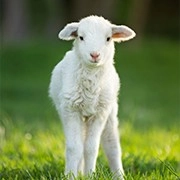Sea Lion Songs

When we think of sea lions, we often imagine their playful nature and incredible agility in the water. But there's another side to these fascinating marine mammals that we may not always notice: their ability to communicate through vocalizations.
If you've ever heard a sea lion's loud and distinctive bark or call, you might have wondered, "What are they saying?" Well, the answer is far more interesting than you might think.
Male sea lions, in particular, have a unique and impressive vocal repertoire that they use primarily during mating season. In this article, we will dive into how these vocalizations play a crucial role in attracting mates, defending territories, and asserting dominance within their colonies.
The Role of Vocalizations in Sea Lion Behavior
Sea lions are known for their complex social structures. During the breeding season, the waters surrounding coastal colonies become highly competitive as males compete for access to females. The ability to communicate effectively is crucial for these animals in such a crowded and competitive environment.
Male sea lions use a variety of vocalizations to communicate with females and rival males. Their most prominent vocalization is a loud, bellowing call that can be heard from great distances, often several miles away. This call is a territorial marker, signaling to other males that the area is claimed and that they are ready to fight to defend it.
Interestingly, the vocalizations of male sea lions are not just random sounds but are part of a courtship ritual. These calls serve as a means of showing strength and establishing dominance. In the animal kingdom, strength and dominance are often linked to reproductive success, and male sea lions are no exception.
How Vocalizations Help Males Attract Mates
For male sea lions, vocalizations are not only about defending territory—they are also a key tool for attracting females. During mating season, females are highly selective about their mates, often choosing those with the most commanding presence. A strong, frequent vocalization can indicate to a female that a male is both healthy and powerful, making him a desirable mate.
Research has shown that females are more likely to approach and mate with males who produce louder, more consistent calls. These vocalizations not only showcase the male's physical strength but also act as a sign of his dominance within the colony. A male who can maintain a loud, continuous call is often viewed as a strong leader—traits that make him more attractive to females looking for a mate with the best genetic traits.
Interestingly, it's not just the loudness of the call that matters. The frequency and rhythm of the vocalizations also play a role in a male's success. Males that can sustain their calls for longer periods without becoming fatigued are often seen as more resilient, which could be another factor in attracting females.
Vocalization and Territory Defense
In addition to attracting mates, male sea lions also use their vocalizations as a means of defending their territory. These vocal calls help establish boundaries within the colony, signaling to other males that they are not welcome in the area. Territory is incredibly important to male sea lions, as it provides access to females, who prefer to mate in more established, safe zones.
When another male encroaches on a claimed territory, the defending male will often escalate his vocalizations, making them louder and more intense. This vocal competition can sometimes result in physical confrontations, where the males may fight for dominance and access to females. The louder, more aggressive calls serve as both a deterrent and a challenge to rivals, signaling that the male is ready to protect what he has claimed.
Research suggests that in some sea lion colonies, vocalization intensity can actually predict the outcome of these territorial disputes. Males who produce more powerful calls tend to hold onto their territory longer and attract more females, cementing their position at the top of the social hierarchy.
The Importance of Vocalizations in Social Bonding
Beyond mating and territory defense, sea lion vocalizations also play an important role in maintaining social bonds within colonies. Sea lions are highly social animals and often gather in large groups, where communication is vital. While most of the vocalizations during the breeding season are used for courtship and defense, they also facilitate group cohesion and interaction.
For instance, mother sea lions and their pups communicate through a series of softer vocalizations. These calls help mothers locate their pups within crowded colonies and serve as a way to reinforce social connections. Even after the breeding season, sea lions continue to use vocalizations to maintain social structure and coordinate group behaviors.
In fact, studies have shown that sea lions are capable of recognizing individual calls, both of their rivals and their social group members. This level of vocal recognition further emphasizes the importance of communication in maintaining order within the colony.
Conclusion: The Fascinating Language of Sea Lions
The vocalizations of male sea lions are a prime example of how animals use sound to communicate in complex social systems. From attracting mates to defending territory and maintaining social bonds, these calls are vital to their survival and success during the breeding season.
Next time you hear the distinctive bark of a sea lion, you'll know that it's not just random noise—it's a carefully crafted call that plays a crucial role in the life of these fascinating animals. Whether they are competing for mates or defending their territory, sea lions use their voices to navigate a world that's filled with both competition and opportunity.

We hope you've enjoyed learning more about the fascinating world of sea lion communication! Have you ever encountered these incredible creatures in the wild or seen them use their vocalizations? Share your thoughts and experiences with us in the comments below.

 · Animal Team
· Animal Team